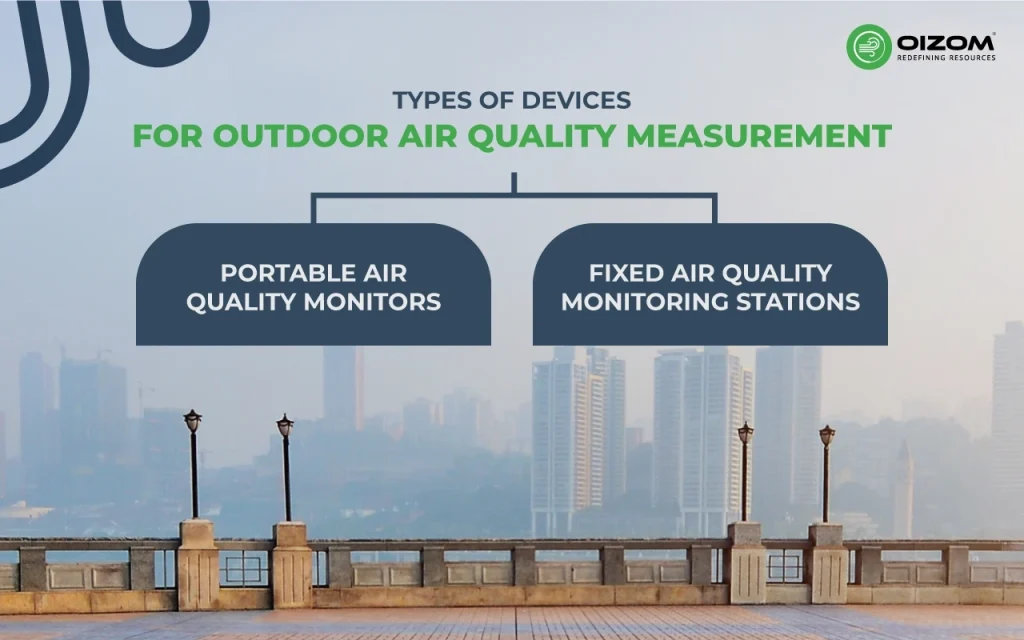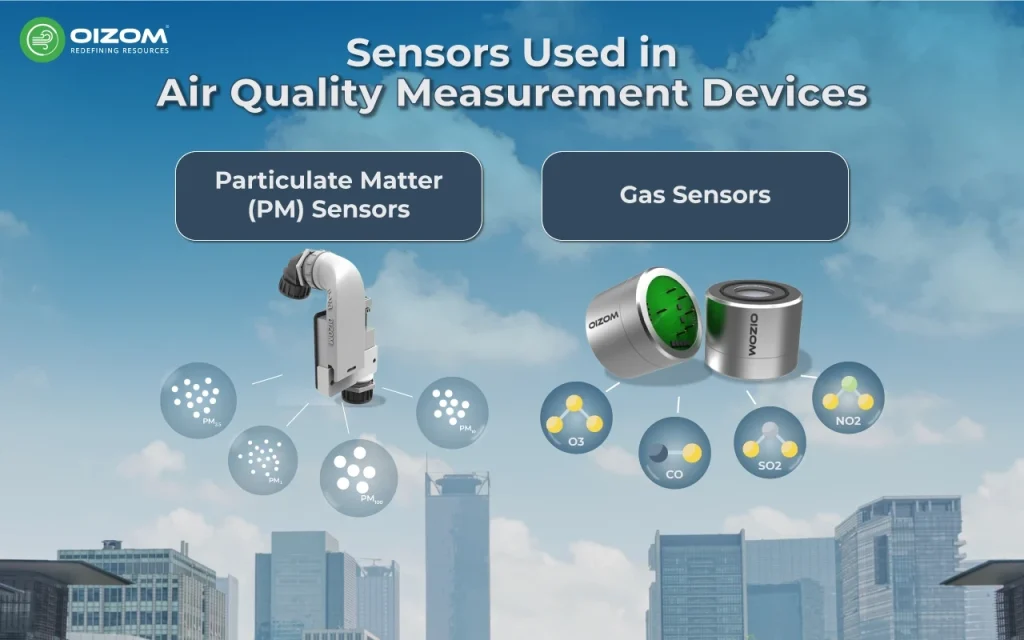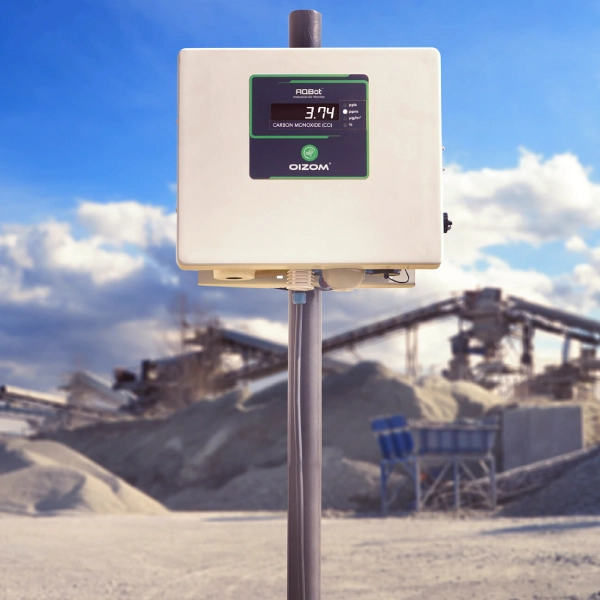Nowadays, air quality is a major concern as it is responsible for several severe diseases. Regular monitoring is essential to control the impacts of poor air quality on human health and the environment. Since I am an environmental engineer with broad experience in air quality research with sensor-based air monitors for measuring air quality, I decided it was time to put together and write a blog article about my top picks for the best air quality monitors for the outdoors. In this article, I’ll tell you the best options for each case, regardless of your budget for a portable air quality monitor or fixed air monitoring device.
A few years ago, I was amazed at how little knowledge and accessible information about air pollution existed. While it’s only been a few years, we’re witnessing increased awareness of air pollution. As more individuals become aware of the dangers, the question, ‘How can I monitor my air quality?’ frequently arises. This is an excellent question since, while it is simple to learn about air quality, it is much more difficult to choose when to act.
Fortunately, we now have a variety of tools that can alert us when air pollution threatens our health. These are air quality monitors, and there are numerous options available today. They are also reasonably priced. However, with so many air quality monitors on the market, it can be hard to choose the right one. With so many monitors featuring different sensors, features, and connectivity options, picking the best-fitting device is almost overwhelming.
Which Devices are used to Measure outdoor Air Quality?
If you understand why an air quality monitor is an essential tool, you may skip this part and continue. However, if you’re new to such monitors, you may ask why you’d need one. Air quality monitors record pollutant levels – whether PM1, PM2.5, VOCs, CO2, or otherwise. These devices provide insight into an otherwise (usually) invisible world that greatly impacts our physical and mental health. Here’s an overview of some tools and procedures used to measure air quality.
Satellite
- It may seem contradictory, but one of the most effective ways to address global air pollution issues on Earth is from space. By utilizing space research and orbiting satellites, we may gain a detailed picture of the toxins in our atmosphere. These sensors can specifically monitor particle pollution, ground-level ozone, carbon monoxide, and other important pollutants.
On-the-ground sensors
- In addition to satellite data, the AQI is informed by a vast network of ground-level sensors. Traditionally, these have become stationary monitoring facilities at government buildings. However, greater awareness of the danger of poor air quality has led to global concern for air quality monitoring networks.
- Furthermore, this static data is enhanced by a growing network of mobile sensor equipment. From vehicles equipped with air quality monitoring instruments to handheld instruments carried by volunteers, this fluid source of air quality measurements is critical to keeping an up-to-date record of how pollutants fluctuate in concentration and travel over time.
Types of Devices for Outdoor Air Quality Measurement

The major differences and contrasts between the pros and cons of each choice are cost, accuracy, convenience of use, maintenance requirements, and environmental adaptability. From low-cost portable air quality monitor systems for individuals and education to the precision and dependability of fixed professional systems for regulatory compliance and occupational health, we look at what makes each choice acceptable for different user needs and conditions. Air Quality in Planning Outdoor Sports Events is also a critical consideration for ensuring the safety and health of participants and spectators, Our objective study seeks to provide the knowledge essential for your needs, ensuring successful different types of devices for outdoor air quality measurement.
Portable Air Quality Monitors
A portable air quality monitor may not be something you are considering buying. But you definitely should be.

Imagine going for a jog or organizing a picnic in the park. How do you immediately determine whether the air is clean and safe? This is where portable air quality monitors come into play. These useful instruments are small, portable, and provide real-time data on various pollutants, including PM2.5, PM10, CO2, NO2, and O3. They are intended for personal use, making them ideal for outdoor enthusiasts, parents, and anybody concerned about their near surroundings. Portable monitors’ value lies in their convenience and immediacy. However, it’s important to note that while they provide valuable information, their accuracy can vary and may not measure all types of pollutants.
Fixed Air Quality Monitoring Stations
On the other hand, stationary air quality monitoring stations serve as the foundation of national and regional air quality monitoring networks. These stations are carefully located in various settings, including urban centers, industrial regions, and parks, to give continuous and comprehensive data on a wide spectrum of pollutants. They’re outfitted with advanced sensors and technologies to provide accurate and dependable air quality data. This data is vital for policymakers, researchers, and public health officials to examine long-term trends, create standards, and implement steps to enhance air quality. Fixed stations provide detailed and reliable data but cannot deliver the personal, on-the-go readings that portable monitors provide.
Monitoring devices such as Oizom, at the forefront of this paradigm shift, provide comprehensive solutions that empower industries, cities, smart campuses, construction, mines, and airports to monitor, assess, and act on various parameters. The path to sustainability becomes clearer with real-time accurate data, cutting-edge technology, and a commitment to a greener future. Harness the power of data with Oizom’s air quality monitors.
Sensors Used in Air Quality Measurement Devices
Understanding the various sensors employed can provide insight into how these devices operate and what makes them tick. Let’s look at the two main types of sensors you’ll encounter: Particulate Matter (PM) and Gas sensors.

Particulate Matter (PM) Sensors
The first and most crucial consideration when choosing an air quality monitor is the types of sensors required. Almost every air quality monitor will include a PM2.5 sensor, but everything else will vary depending on the monitor. PM sensors in air quality equipment are meant to detect these invisible threats, which can harm our health. The Particulate Matter sensor module can accurately measure respirable suspended particulate matter in the ambient air. The PM sensor module design can monitor the atmospheric particulate matter concentration in real-time. The advanced support electronics of this air quality sensor make it compact and reliable. The sensor works on laser scattering technology and active sampling. These sensors can differentiate between different sizes of particles, like PM2.5 and PM10, which refers to their diameter in micrometers.
Oizom Outdoor air quality monitoring systems like Polludrone Lite, Polludrone Smart, and Polludrone Pro use this particulate matter sensor module. Therefore, the PM2.5 sensor module is used in multiple applications, such as national air quality monitoring, environmental health impact, construction monitoring, and air quality research projects.
Gas Sensors
While PM sensors monitor particulate matter, gas sensors detect numerous hazardous chemicals in the air. These gases include nitrogen dioxide (NO2), sulfur dioxide (SO2), carbon monoxide (CO), and ozone (O3), among others. They can originate from various sources, including automobile emissions, industrial activities, and natural events. Gas sensors operate through chemical reactions when the target gas comes into contact with a sensitive material within the sensor, changing the material’s electrical resistance. This change in resistance is measured and translated into a gas concentration level.
Gas sensors are important in the Internet of Things revolution because they enable monitoring of harmful gases such as carbon monoxide and methane. These sensors can be linked to an IoT network, providing real-time notifications when harmful levels are identified, allowing rapid action, and preventing potential accidents.
Conclusion
In wrapping up our journey through outdoor air quality measurement, it’s clear that the devices we’ve explored, portable air quality monitors and fixed monitoring stations equipped with their PM and gas sensors, are more than just gadgets. Measuring particulates and gases provides comprehensive data on air quality, helping us navigate pollution with awareness and action.
Finally, if you want an inexpensive yet accurate outdoor air quality monitor, the Oizom should be one of your first choices. This monitor comes with various customized parameters and provides real-time accurate data. Its robust and rugged design can withstand temperatures from -20℃ to +60℃. By understanding the importance of air quality monitoring and effectively implementing it, we can create a healthier, more productive workplace and a brighter future for all.
FAQs
Yes, air quality monitors exist for this exact purpose. They're equipped with various sensors to identify pollutants like particulate matter and gases and are suitable for personal and professional use.
Indeed, portable air quality monitors are available. These devices are handy for checking air quality on the move and offer real-time data on pollutants to help you make healthier choices.
Air quality is measured using air quality monitors, which can be stationary for wide-scale monitoring or portable for individual use. They utilize PM and gas sensors to detect and quantify pollutants in the air.






